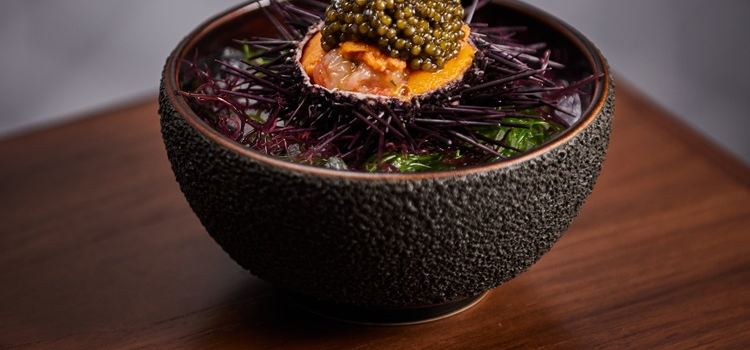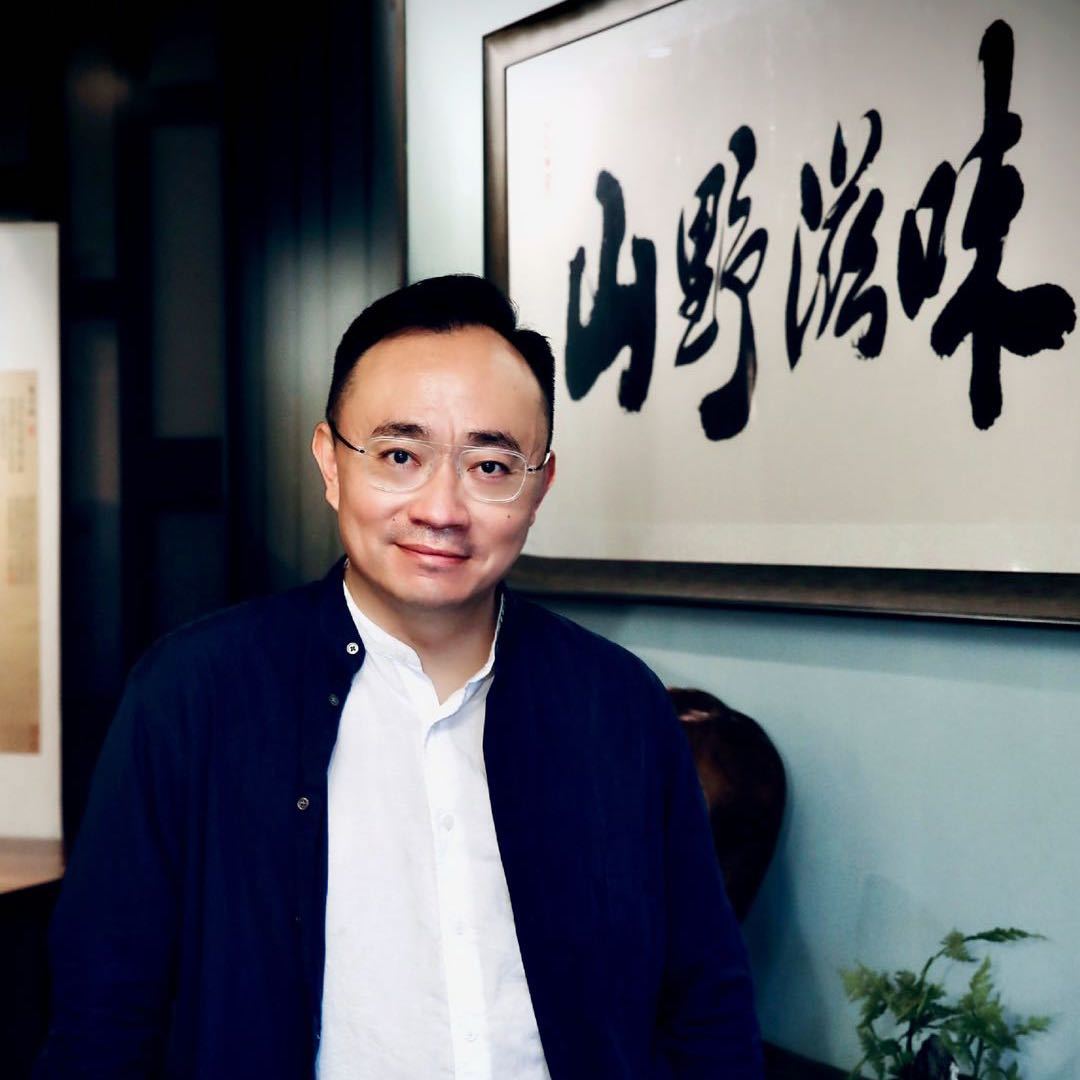WAKU GHIN BY TETSUYA WAKUDA
4.5/548 Reviews
Marina BayNZD669
Reason:Australian chef Tetsuya Wakuda | Inside Marina Bay Sands

Open Now|17:00-23:00
+65-66888507
What travelers say:

Western Style Japanese Cuisine
On the first night after arriving in Singapore, I enjoyed the Japanese restaurant Waku Ghin, which ranks first in the list of mainland food in Singapore. It is said that this is also Beckham's favorite restaurant in Singapore.
When the chef came out to greet everyone, I saw a "TW" embroidered on his chest. I thought he was a veteran from the Taiwan military village. Later I learned that TW was the abbreviation of his name Tetsuya Wakuda. A friend in charge of catering promotion at the Sands Hotel in Singapore introduced that this legendary Michelin chef has lived in Australia for a long time. Therefore, unlike many classical Japanese cuisine masters, Tw's dishes are more personal. To describe it in the official language, it is to use the taste system of Japanese cooking to control high-quality ingredients from all over the world.
Isn't this the basic killer move of the new chefs of various cuisines that I have seen in the mainland? Putting aside the techniques and ingredients, and then integrating them more widely, and exploring the possibility of innovation, it seems that people have the same heart and the same mind!
However, in fact, the Japanese started exploring this aspect earlier than us, and their attitude is more resolute. After the Meiji Restoration, Japanese society set off a wave of total Westernization. In addition to learning Western scientific education and social systems, Western lifestyles were also considered more civilized and advanced. Therefore, Li Shutong could learn drama in Japan, and the Japanese could brew the best whiskey in Asia. In such a big atmosphere, "Western-style Japanese cuisine" that was highly integrated with Western cuisine was also born.
Focusing on food, tw's approach is indeed not the traditional Japanese style. The half-cooked wagyu is served with wasabi and Japanese-style yaki sauce. The shape and cooking ideas of the dish are both like Japanese thin grilling, Western salad, and a little like Chinese "lo hei". What is still adhered to is the forbearance and restraint of Japanese aesthetics. Chinese chefs are obsessed with flowers, while Japanese chefs are fascinated by dry landscapes.
Unlike the big-ticket dishes of Chinese and Western chefs, Japanese chefs seem to be more keen on piling up details. I thought the cup of food at the beginning was a common stomach-warming soup in today's exquisite Chinese cuisine, but it turned out to be the traditional Japanese chawanmushi. However, the heat of TW has definitely been upgraded and iterated, because the real protagonist of this chawanmushi is the smoked caviar inside. It is necessary to have the warm form of chawanmushi, but also to avoid high temperature from destroying the freshness of caviar. This is probably the precise key that the chef strives to grasp.
There is no commonplace sashimi platter. Fresh sea urchin, fresh shrimp and caviar are mixed to make a "mini bonsai" sashimi "lohei". We have to admit that many of us Japanese food fans are chasing after the hormonal temptation of raw meat, rather than another culinary expression of a thinking system.
TW has a foie gras-roasted hairtail worth learning from Chinese chefs. The hairtail is deboned and the meat is controlled to be soft, slippery and rotten. When mixed with the oily and residue-free foie gras, it does have a full and complex oil aroma. In fact, judging from the cooking method, ingredient selection and flavor combination alone, it is difficult to define which cuisine or country this dish belongs to. Perhaps culture should not have boundaries!
More
Reviews of WAKU GHIN BY TETSUYA WAKUDA
Some reviews may have been translated by Google Translate
4.5/5Outstanding
All (48)
Latest
Photo reviews (13)
Positive reviews (17)
Western Style Japanese Cuisine On the first night after arriving in Singapore, I enjoyed the Japanese restaurant Waku Ghin, which ranks first in the list of mainland food in Singapore. It is said that this is also Beckham's favorite restaurant in Singapore. When the chef came out to greet everyone, I saw a "TW" embroidered on his chest. I thought he was a veteran from the Taiwan military village. Later I learned that TW was the abbreviation of his name Tetsuya Wakuda. A friend in charge of catering promotion at the Sands Hotel in Singapore introduced that this legendary Michelin chef has lived in Australia for a long time. Therefore, unlike many classical Japanese cuisine masters, Tw's dishes are more personal. To describe it in the official language, it is to use the taste system of Japanese cooking to control high-quality ingredients from all over the world. Isn't this the basic killer move of the new chefs of various cuisines that I have seen in the mainland? Putting aside the techniques and ingredients, and then integrating them more widely, and exploring the possibility of innovation, it seems that people have the same heart and the same mind! However, in fact, the Japanese started exploring this aspect earlier than us, and their attitude is more resolute. After the Meiji Restoration, Japanese society set off a wave of total Westernization. In addition to learning Western scientific education and social systems, Western lifestyles were also considered more civilized and advanced. Therefore, Li Shutong could learn drama in Japan, and the Japanese could brew the best whiskey in Asia. In such a big atmosphere, "Western-style Japanese cuisine" that was highly integrated with Western cuisine was also born. Focusing on food, tw's approach is indeed not the traditional Japanese style. The half-cooked wagyu is served with wasabi and Japanese-style yaki sauce. The shape and cooking ideas of the dish are both like Japanese thin grilling, Western salad, and a little like Chinese "lo hei". What is still adhered to is the forbearance and restraint of Japanese aesthetics. Chinese chefs are obsessed with flowers, while Japanese chefs are fascinated by dry landscapes. Unlike the big-ticket dishes of Chinese and Western chefs, Japanese chefs seem to be more keen on piling up details. I thought the cup of food at the beginning was a common stomach-warming soup in today's exquisite Chinese cuisine, but it turned out to be the traditional Japanese chawanmushi. However, the heat of TW has definitely been upgraded and iterated, because the real protagonist of this chawanmushi is the smoked caviar inside. It is necessary to have the warm form of chawanmushi, but also to avoid high temperature from destroying the freshness of caviar. This is probably the precise key that the chef strives to grasp. There is no commonplace sashimi platter. Fresh sea urchin, fresh shrimp and caviar are mixed to make a "mini bonsai" sashimi "lohei". We have to admit that many of us Japanese food fans are chasing after the hormonal temptation of raw meat, rather than another culinary expression of a thinking system. TW has a foie gras-roasted hairtail worth learning from Chinese chefs. The hairtail is deboned and the meat is controlled to be soft, slippery and rotten. When mixed with the oily and residue-free foie gras, it does have a full and complex oil aroma. In fact, judging from the cooking method, ingredient selection and flavor combination alone, it is difficult to define which cuisine or country this dish belongs to. Perhaps culture should not have boundaries!
My husband and I were recommended this restaurant by a friend and it was not disappointing. The food was good and the setting was beautiful! It always maintains good service and good food. The details are carefully planned so you don't feel like you are overstuffed like in many other star restaurants. The service of the staff is attentive and friendly.
This Japanese restaurant named Waku Ghin is located in Seaside Bay. The location of this restaurant is easy to find and the food is top-notch. The average price per person is over 300 yuan, which is not cheap.
Worthy of being a one-star restaurant in Michelin, Singapore’s Waku Ghin’s products are nothing short of carved clams. If Tokyo Ryugin’s products stimulate the visual nerves of different customers, here they can satisfy the taste requirements of different customers! The seafood is simply delicious... Enjoying the beautiful night view of Marina Bay from the Sands side is really intoxicating while drinking tea.
First-class ingredients, steady cooking skills, wandering souls, I ate the lobsters that were greeted in advance, but I didn't eat the out-of-season truffles. Overall, I was quite happy. One Michelin star is extraordinary. The signature dishes are caviar, sea urchin, sweet shrimp and wagyu beef, but I love abalone pasta the most. I have never eaten such delicious pasta.
Waku Ghin, one of Asia's Best 50 restaurants and a two-Michelin-star restaurant in Singapore, has outlets in Singapore and Sydney, but I prefer the one in Singapore. We made a reservation a month in advance and needed to use a credit card guarantee to secure the reservation. There are two teppanyaki restaurants in Marina Bay Sand. Comparing the two, this one wins. The teppanyaki area is different from the dessert area. The dessert area faces the Bay with a great view. Next to it is a row of sake cabinets. This is also my favorite sake bar in Singapore. We had the 10+ course menu and had 2 bottles of wine. No complaints about the food, all dishes were memorable, especially the eel and wagyu, the restaurant has two sitting times and limits the number of diners to 10-12 people per time period. 【Dishes】 "Lobster" and "King Crab" are delicious and tender. Very tasty. 「House sake」 recommends Fan, which is delicious and cost-effective~ Sea urchin and wagyu beef are the specialties, and adding a coconut, strawberry and lychee ice makes it a favorite recommendation. 「Marinated Botan Shrimp with Sea Urchinand Oscietra Caviar」 is a combination of caviar, sea urchin and botan shrimp. The collision of different ingredients and different tastes stimulates the sweetness of the taste buds. "Japanese Ohmi Wagyu Roll from Shiga Prefecture with Wasabi and Citrus Soy" The slightly greasy and full taste of Wagyu beef is just right with the bitter taste of matcha after the meal. "Fresh Strawberry with Lychee Granitaand Coconut Sarbet" is my favorite of the three desserts, fresh strawberry mixed with lychee shaved ice, with a refreshing taste mixed with the sweetness of coconut ice cream. However, the meals you eat every day may be different, it all depends on the ingredients and the chef's mood~
If you can't afford a 400 SGD/person Japanese feast, why not try Waku Ghin's French pastry handmade desserts and cakes? Every component of the pastry is cooked in the restaurant, using the finest ingredients and fresh fruits from Japan and Europe. The signature cheesecake is filled with fresh lemon curd, with a thin layer of icing and topped with white chocolate feathers; the lemon tart's tangy aroma comes from the smooth lemon curd, sweet puff pastry and lemon peel.